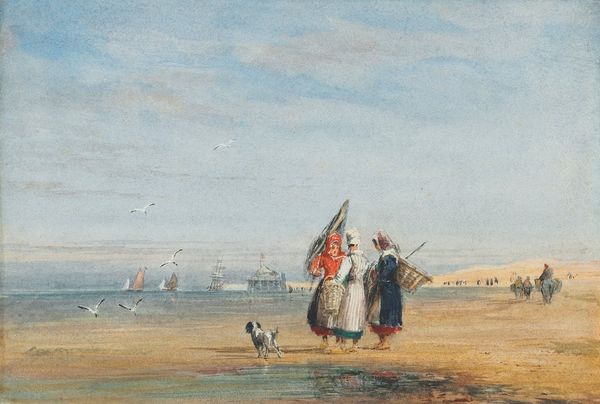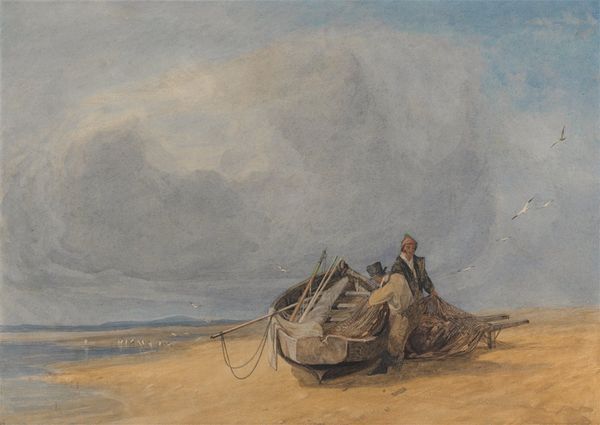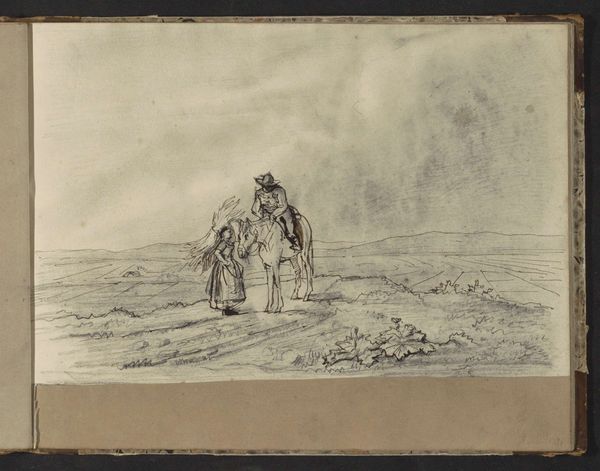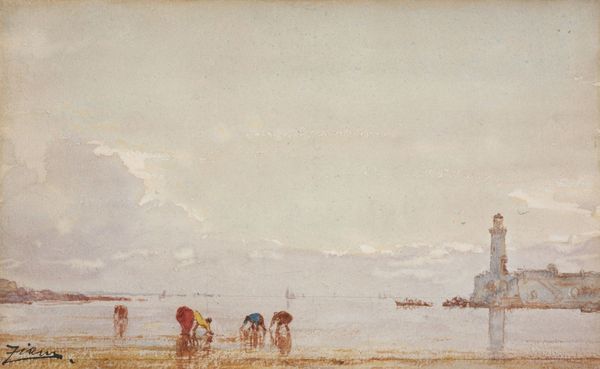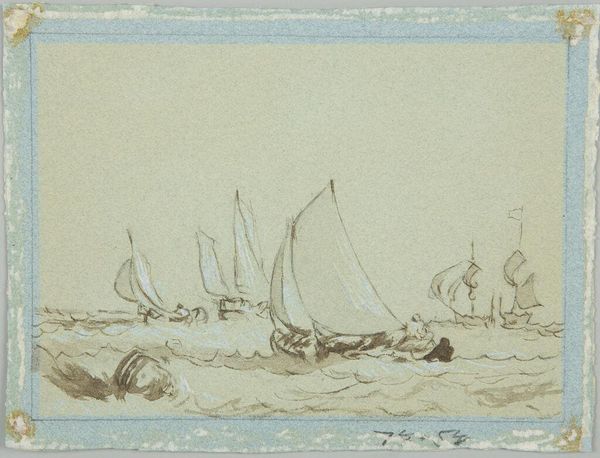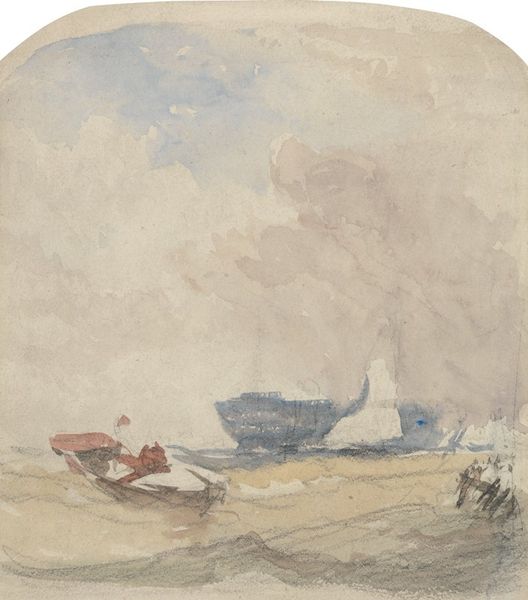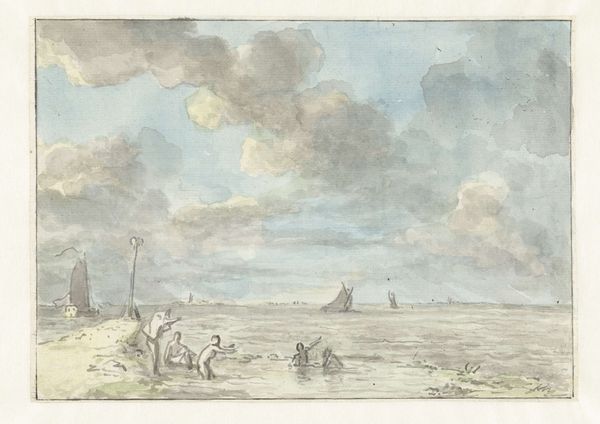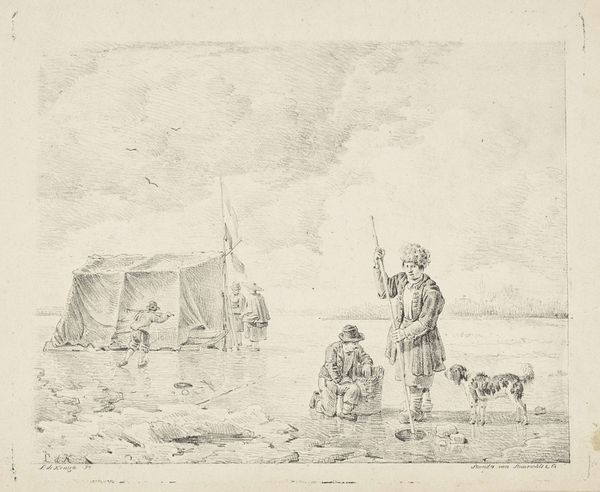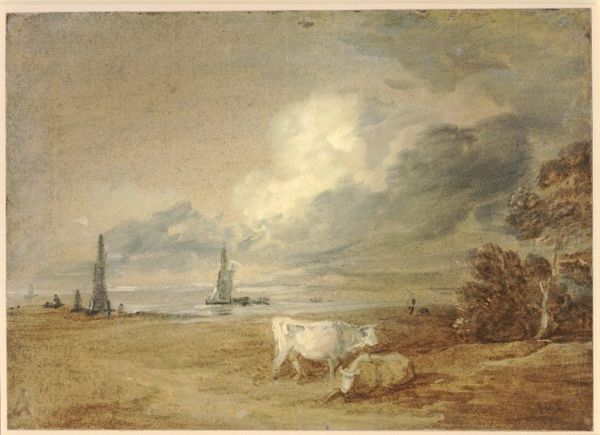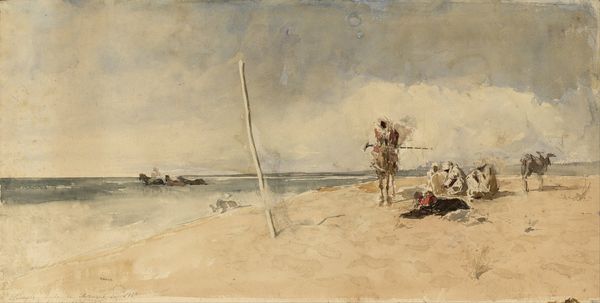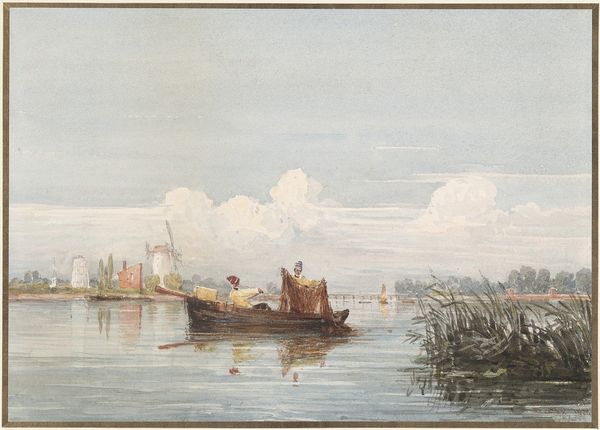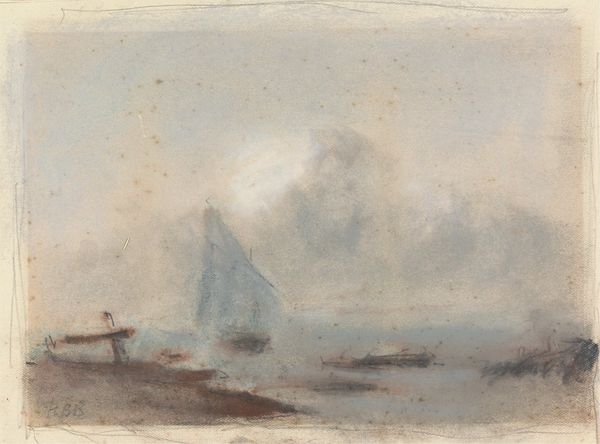
drawing
#
drawing
#
abstract painting
#
water colours
#
possibly oil pastel
#
handmade artwork painting
#
oil painting
#
acrylic on canvas
#
underpainting
#
men
#
painting painterly
#
watercolour illustration
#
watercolor
Dimensions: 5 3/4 x 8 3/16 in. (14.6 x 20.8 cm)
Copyright: Public Domain
Curator: "Beach Scene," created by Eugène Boudin between 1882 and 1883. Look at the sky – it’s almost alive. What catches your eye? Editor: Oh, instantly? The dreamy haze! It’s less a beach, more a memory of one. Fuzzy edges, pale hues... like trying to recall a summer day from childhood. Is that pure nostalgia I’m picking up, or am I projecting? Curator: The appeal might lie in Boudin’s impressionistic leanings, capturing fleeting moments rather than photographic realism. Notice the figures huddled beneath umbrellas, simplified forms. Do you see symbolism in these obscured visages? Editor: Definitely a screen. Umbrellas shielding from harsh light—but perhaps also protecting private thoughts, unspoken emotions. It reminds me of Chekhov. Curator: Interesting comparison. Chekhov also examined the inner lives of individuals navigating social constraints. Now, see how Boudin used subtle details to suggest hierarchy: differences in dress or bearing, for instance, implying varying levels of wealth and social standing in his chosen palette of pastels and watercolor? Editor: Right! Those details speak volumes—suggesting a society enjoying leisure yet also separated by unspoken rules. I get a slight feeling of unease amidst the prettiness, do you see it? A fragile ecosystem captured in powdery pigments... Curator: Precisely. Boudin does more than just paint pretty pictures; his "Beach Scene" invites questions. How does privilege operate, who is excluded from this idyll, and how long before this pleasant facade disintegrates under scrutiny or historical upheaval? Editor: He layers critique into fleeting impressions, and he doesn’t provide any overt narrative… only subtle cues that encourage a conversation between observer and artwork, here and now. The wisps of sailboats feel somehow melancholy too… a sense of longing perhaps. Curator: Or fleeting opportunity! Perhaps both readings are equally valid because memory, longing, and interpretation operate together to build psychological and historical connections, making this humble “Beach Scene” evocative and meaningful to modern eyes. Editor: Well, this stroll through "Beach Scene" was delightfully thought-provoking. Thanks for sharing your expertise. Curator: The pleasure was all mine. It’s the artist's invitation for us to make that personal and societal assessment, connecting symbol with significance.
Comments
No comments
Be the first to comment and join the conversation on the ultimate creative platform.
